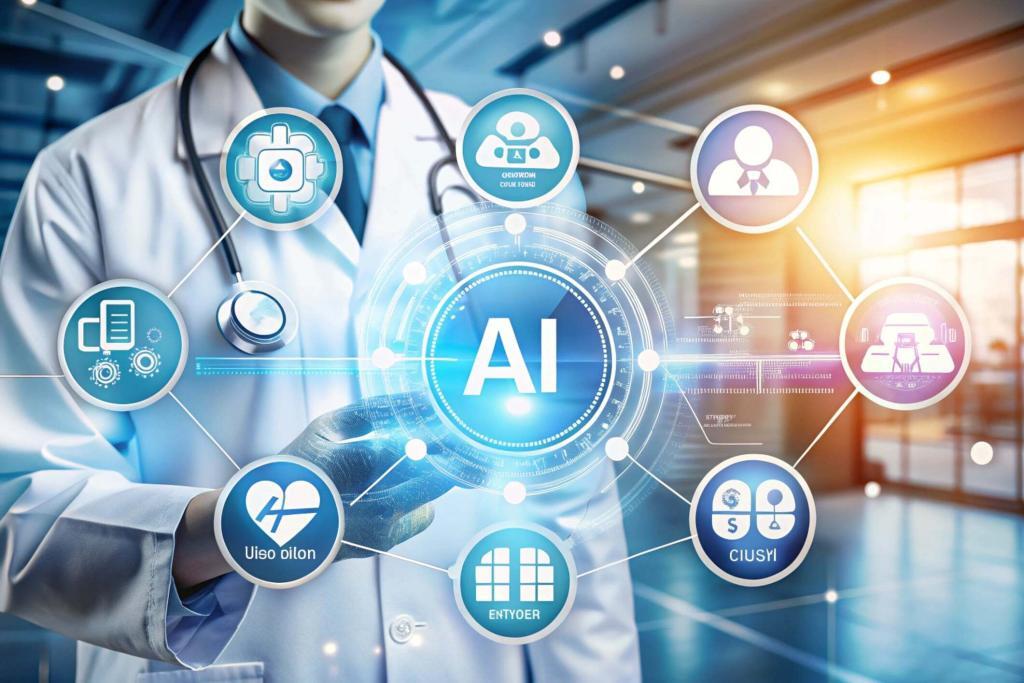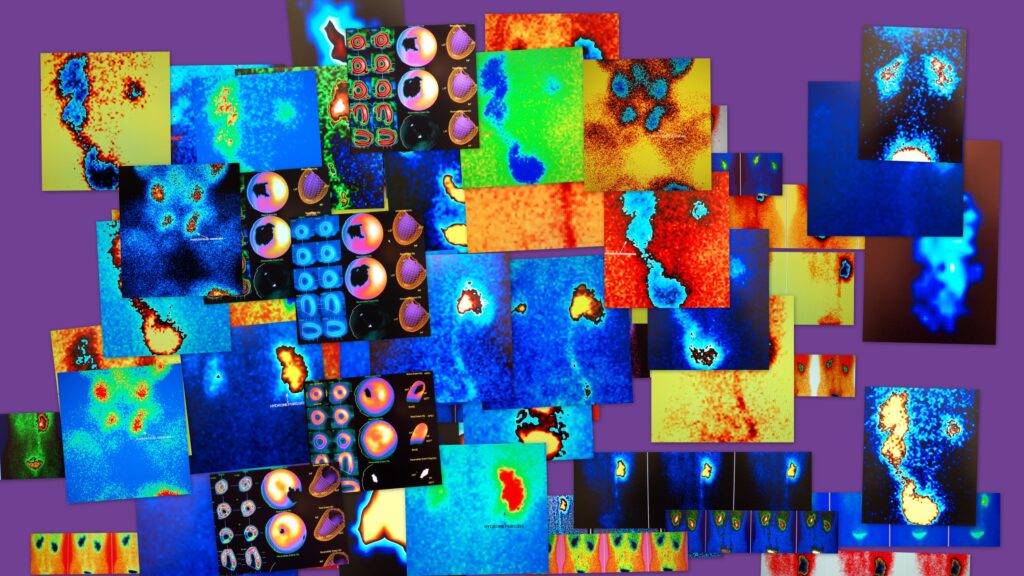The healthcare system faces a growing crisis that rarely makes headlines: Physicians now spend more time documenting patient encounters than actually treating patients. With doctors dedicating 35-37% of their workday to paperwork rather than patient care, both medical professionals and patients suffer.
The emergence of AI note-taking tools, including AI note takers free and AI scribe tools, offers a promising solution, automatically capturing and organizing medical conversations into structured notes. AI notes are revolutionizing the way healthcare professionals manage documentation, freeing up valuable time for direct patient care..
The Documentation Burden: Why Healthcare Needs AI Scribes
The administrative paperwork avalanche has buried the heart and soul of medicine. Today’s physicians spend nearly 16 minutes on documentation for every 30-minute patient visit. This documentation burden carries staggering costs:
- Financial drain: Healthcare systems collectively lose $60 billion annually to documentation inefficiencies.
- Rising burnout: 63% of physicians report burnout symptoms, with administrative tasks as the primary culprit.
- Patient dissatisfaction: Studies show patient ratings drop significantly when doctors spend more than 30% of visit time looking at screens.
The modern medical office requires robust administrative systems, from patient management to practice security cameras for business protection, but the documentation burden has reached crisis levels that demand innovation.
AI Scribes Explained: Transforming Healthcare Technology
AI scribes represent a revolutionary leap beyond traditional dictation software. These sophisticated systems combine several cutting-edge technologies:
Natural Language Processing (NLP): AI scribes understand medical terminology, detect symptoms, and follow complex clinical conversations with 94% accuracy.
Advanced Speech Recognition: Modern systems differentiate between voices, filter background noise, and understand diverse accents or speech patterns.
Machine Learning Integration: Unlike static software, AI scribes continuously improve by learning from corrections and adapting to individual provider preferences.
Unlike human scribes, who require training, scheduling, and benefits, AI scribes work 24/7 without breaks or turnover. They integrate directly into clinical workflows, capturing everything from initial complaints to treatment plans and follow-up instructions.
4 Transformative Benefits of AI Medical Documentation
Healthcare organizations implementing AI scribe are witnessing remarkable improvements across multiple dimensions:
1. Documentation Time Slashed
Physicians using AI scribes report 50% reductions in documentation time. For a typical primary care doctor, this translates to saving nearly 2 hours daily.
2. Enhanced Clinical Accuracy
AI scribes capture details human scribes might miss. One multi-clinic study found AI documentation included 22% more relevant clinical findings than traditional methods.
3. Cost-Effectiveness
AI scribes typically cost 60-70% less than human scribes while providing 24/7 availability and consistent performance.
4. Real-Time Documentation
Notes are completed moments after the patient encounter ends, improving care coordination and eliminating documentation backlogs.
The Patient Experience Revolution
Beyond efficiency metrics, AI scribes fundamentally transform the doctor-patient relationship. In a Stanford study, 92% of patients preferred visits where doctors used AI scribes versus traditional documentation methods.
This restoration of human connection yields measurable health benefits. Research shows that increased eye contact and active listening directly correlate with:
- Improved patient compliance with treatment plans
- Higher patient satisfaction scores
- More accurate diagnoses
- Reduced malpractice risks
- Stronger therapeutic relationships
Doctor Efficiency and Satisfaction: Beyond Time Savings
The benefits of AI scribes extend far beyond reclaimed hours. Physicians report dramatic improvements in their daily experience:
Mental Energy Conservation: Without the cognitive drain of documentation, doctors maintain sharper clinical thinking throughout their day.
Burnout Prevention: By eliminating the top contributor to physician burnout, AI scribes help sustain careers and prevent early retirement.
Visit Quality Improvement: With documentation handled, physicians can focus entirely on listening, examining, and explaining.
Work Flexibility: Many doctors leverage time savings to see additional patients, spend longer with complex cases, or achieve better work-life balance.
Integration with Healthcare Systems and Technologies
Today’s AI scribes integrate seamlessly into existing healthcare ecosystems:
EHR Compatibility: Leading AI scribes work with major electronic health record systems, automatically formatting notes to practice standards.
Workflow Integration: Rather than disrupting established routines, these systems enhance existing processes.
Security Enhancement: Many healthcare facilities combining AI documentation with security cameras for business monitoring report improved overall operational visibility while keeping documentation secure.
Minimal Training Requirements: Most physicians become proficient with AI scribes after just 1-2 patient sessions.
Ethical Considerations and Patient Privacy Safeguards
Healthcare organizations implementing AI scribes must navigate important privacy considerations:
HIPAA Compliance: Top systems meet all federal privacy requirements using enterprise-grade encryption and secure data handling.
Patient Transparency: Best practices include informing patients about AI scribe use with simple explanations in consent forms.
Data Security: Information never leaves secure healthcare environments, protecting sensitive details.
Human Oversight: All AI documentation undergoes physician review and approval before finalization.
The Future Evolution of AI Scribes in Healthcare
Today’s AI scribes represent just the beginning of a technological revolution that promises even more powerful capabilities shortly. One of the key advancements will be Clinical.
Decision Support, where AI systems will soon suggest relevant protocols and treatment options based on documentation. Additionally, AI’s ability to perform Advanced Analytics will improve, as pattern recognition across thousands of similar cases will help identify subtle diagnostic clues that might otherwise go unnoticed.
The integration of AI with Telehealth is already underway, with AI scribes adapting to virtual care environments, thus supporting the continued expansion of telehealth services. Moreover, next-generation AI systems will have Multilingual Capabilities, enabling them to translate and document in multiple languages, which will greatly enhance access and inclusivity for patients worldwide.
Conclusion
AI scribes represent a rare win-win innovation in healthcare—saving physicians from documentation drudgery while enhancing patient care and satisfaction. As implementation costs fall and capabilities expand, these technologies will likely become standard in medical practices nationwide. For healthcare providers drowning in documentation, AI scribes offer a lifeline that reconnects them with the human element that drew them to medicine in the first place.
FAQs
How accurate are AI medical scribes compared to traditional documentation?
Studies show AI medical scribes achieve 94-96% accuracy in clinical documentation, outperforming traditional physician-created notes which often miss 20-30% of relevant details due to time constraints. However, all AI documentation still requires physician review before finalization, providing an important quality check.
How much do AI scribes typically cost for a medical practice?
AI scribes generally cost between $500-$1,200 per month per provider, representing a 60-70% savings compared to human medical scribes. Most practices achieve ROI within 3-6 months through increased efficiency, reduced overtime costs, and the ability to see additional patients.
Do patients need to consent to AI scribe use during appointments?
While explicit consent requirements vary by state, healthcare best practices include notifying patients that AI scribing technology will assist with documentation. Most clinics include this information in their general consent forms and find that patients overwhelmingly support technology that allows doctors to focus more attention on them.
Disclaimer
The information provided in this article is intended for general informational purposes only and does not constitute medical, legal, or professional advice. Open Medscience makes every effort to ensure the accuracy and reliability of the content, but we do not guarantee its completeness, timeliness, or applicability to your specific circumstances.
Any references to AI scribes, medical technologies, or healthcare systems are provided to illustrate current trends and should not be interpreted as endorsements of specific products or services. Readers are encouraged to consult qualified healthcare professionals or regulatory authorities before implementing any new technology or workflow in clinical settings.
Patient data privacy and security remain critical concerns. While AI scribe tools may offer significant benefits, their use must comply with local data protection laws, including HIPAA or GDPR, and require informed patient consent where applicable.
Open Medscience shall not be held liable for any decisions made or actions taken based on the content of this article.
You are here: home » diagnostic medical imaging blog »



